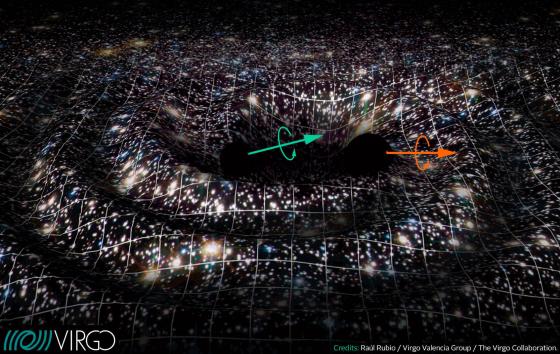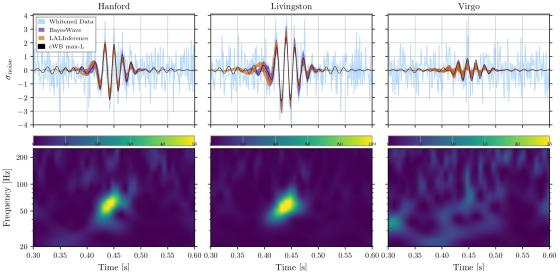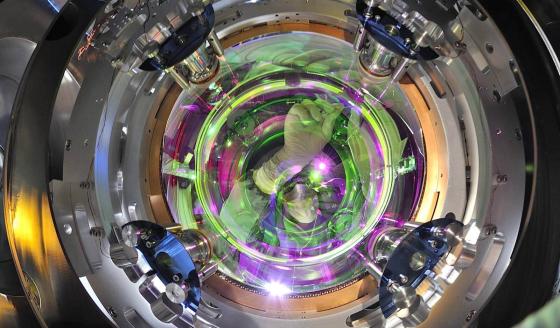On May 21, 2019, the Advanced LIGO and Advanced Virgo detectors observed a gravitational wave coming from the merger of an extraordinary pair of black holes. The signal, called GW190521, originated from the coalescence of two objects of mass 65 and 85 Solar masses respectively (MꙨ). The determination of this signal and its consequences was particularly difficult, both due to the characteristics of the event (the short duration, ~ 0.1 sec, and its low frequency, 30-80 Hz) which required the development of new waveforms, for the validation procedures that have been carried out (injections of test signals in the interferometers) to evaluate the background statistics and the correct calibration of the instruments, and for the theoretical and astrophysical understanding of the implications of this observation.
Both objects are far more massive than any other black hole revealed so far by Virgo and LIGO. Using our current theoretical understanding of how massive stars work and how black holes are formed, it is thought that black holes with masses between 65 and 130 solar masses cannot be the result of the collapse of a star.
The extraordinarily large masses of black holes that produced GW190521 are not simply record-breaking; they challenge our understanding of the mechanisms of black hole formation and are a special laboratory for studying the force of gravity, observed under extreme conditions.

The event therefore suggests the existence of a population of black hole mergers of medium-large mass that could be discovered during the next LIGO and Virgo observation campaigns, which, in the near future, will also be joined by the Kagra detector in Japan.
The Genoa group consists of technicians and researchers from the Department of Physics and INFN; it is engaged in the Advanced VIRGO experiment on several fronts: the locking system of the interferometer, the creation and control of optics for “squeezed” states of laser light, the management of the flow of acquired data, the study of materials for the new generation of mirrors and the mitigation of low frequency noise sources. The upgrade of the various subsystems of the Virgo detector will be completed at the end of 2021 and the interferometer will enter data taking again in 2022.

In figure: The GW190521 event observed by the LIGO Hanford, LIGO Livingstone and Virgo detectors. Times are shown from May 21, 2019 at 03:02:29 UTC. The top row shows the detector data in the time domain after the whitening filter on the noise amplitude of each instrument (blue lines); the waveform of the point estimated by the analysis pipeline search (cWB, black line); the 90% credibility intervals from the posterior probability density functions of the time series of the waveform, obtained by Bayesian inference with two theoretical signal models: the waveform model BH (orange bands) and the wavelet model (purple bands). The ordinate axes are in units of noise standard deviations. The bottom row shows the time-frequency representation of the data.


